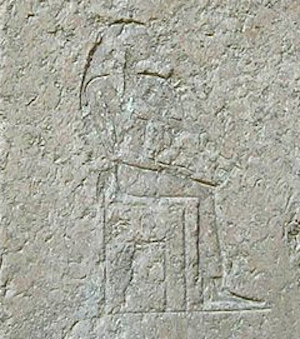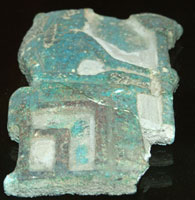Although women in ancient Egypt enjoyed rights, freedoms and respect not necessarily accorded to their sisters in other cultures, ancient Egyptian society was still, to all intents and purposes, male dominated. Few positions of power were open to women, and few women were educated.
Royal women could wield more power, but this was largely based on their relationship with the pharaoh. However, there are a few notable exceptions to this generalisation. It is undeniable that Sobekhotep, Hatshepsut, Tausert and Cleopatra VII ruled Egypt as female pharaohs, but they had a few less well known colleagues who also ruled Egypt.
Manetho recorded that in the second dynasty of the Old Kingdom, a pharaoh named Nynetjer affirmed that during his reign “women received the right to gain royal dignity”. This is taken by some as a reference to two of the candidates for earliest “female pharaoh”, even though they both predated Nynetjer!
Early Dynastic Period
Queen Neithotep
Neithhotep lived at the very beginning of the First Dynasty and may have been the first queen and female ruler of Egypt. Most experts suggest she was the wife of Narmer, although recent evidence suggests she may have instead been the wife of Hor-Aha. She may have ruled jointly with her husband, or as queen regent for her son or nephew (either Hor-Aha or Djer) following his death.
The size of her tomb, and the fact that her name was written within a serekh led early Egyptologists to regard her as a previously unknown king. Her serekh was topped with the crossed arrows of the goddess Neith, making it a feminized version of the serekh topped by Horus which was the earliest of the five royal names of the king. There are only two known examples of people who wrote their names inside a serekh but were not kings – Neithhotep and Mereneith – making it highly likely that this was an indication of regency or co-rule.

Queen Mereneith
Most experts agree that Mereneith ruled Egypt as a regent for her young son Den when her husband Djet died. She appears on a kings list found in the tomb of Den with the title “King’s Mother”, rather than king, and her name seems to be referenced on the Palermo Stone. Unfortunately, the fragment is damaged making it hard to draw firm conclusions. Mereneith was buried with all of the extravagance of a second dynasty pharaoh. She had two burial sites both of which were surrounded by the sacrificial burials of her servants. She is the only ancient Egyptian woman known to have followed this pharaonic tradition. She also wrote her name in a serekh, topped by the sign of the goddess Neith.

Old Kingdom
Queen Khentkaus I
Khentkaus I (late fourth dynasty) is depicted on a granite doorway of her mortuary temple at Giza wearing a pharonic beard and carrying the Hetes Scepter. Her title “mut nesu-bity nesu-bity”, can be translated as either “Mother of Two Kings of Upper and Lower Egypt” or “Mother of the King of Upper and Lower Egypt, and King of Upper and Lower Egypt”. Her family relationships are still a subject of some controversy, and some Egyptologists have suggested she may be the inspiration for Reddjedet from the Westcar Papyrus who was the mother of three kings. Her name does not appear in a cartouche, which may suggest she was not an independent ruler but a queen regent. Her tomb was enlarged during her lifetime, possibly to reflect her promotion to regent.

Queen Khentkaus II
Queen Khentkaus II (fifth dynasty) was for some time confused with her namesake Khentkaus I, partly because they both used the title “mut nesu-bity nesu-bity”. We know that she was actually the mother of two kings, but that does not necessarily preclude her from also being a ruler of Egypt. Like her namesake she was buried in a tomb which showed signs of being enhanced to reflect a promotion in her status. She was depicted wearing the Ureaus and carrying the Hetes Scepter, but her name is not enclosed in a cartouche.

Queen ?
There is also an elusive fifth dynasty queen who may have ruled, probably as co-regent. Decorations in the pyramid of Djedkare’s wife were altered during her lifetime to include elements of royal insignia and the vulture headdress, and some of the features of her tomb are suggestive of the pyramid complex of a king. Unfortunately, her monument is badly damaged and a full excavation report has never been published, so we cannot even confirm her name. It has been suggested that Djedkare may have owed his legitimacy to her, but again we have insufficient evidence to confirm her status one way or the other.
Ankhnespepi II
Ankhnespepi II (also known as Ankhnesmeryre II) was the mother of the Sixth dynasty pharaoh Pepi II. It is fairly likely that she acted as regent for Pepi II, as he was very young when he became king. Although she used the traditional titles of a sixth dynasty queen there are a few interesting details which would support this regency. One is an inscription from Wadi Maghara in which her title “king’s mother” is written in an unconventional manner which placed the sign for mother inside the hieroglyphs for “king”. The second is a beautiful statue of the queen with the king, depicted as a miniature adult, seated on her knee. The echoes of Isis protecting Horus are obvious, but it is also notable that this is one of the very few occasions when a pharaoh was depicted on a smaller scale than anyone other than a god. Her pyramid, one of the largest ever made for a queen, was also the first queen’s pyramid to include the pyramid texts.

Middle Kingdom
During the twelfth dynasty, two queens wrote their names in cartouche – an honour previously reserved for the pharaoh. Mertseger was the great wife of Senusret III, and there is no evidence that she was also a ruler. However, Neferuptah (the daughter of Amenemhat III) may have been the intended successor of her father. Unfortunately, she died before him and (after a brief reign by Amenemhat IV) Sobekneferu (possibly Neferuptah’s sister) became king of Egypt.
Sobekneferu
There is no doubt that Sobekneferu was a king, and not a queen regent. She used all five of the king’s names and her reign is recorded in the Turin Cannon. She was depicted wearing the kilt of a man over her sheath dress. However, this was not an attempt to pretend to be male (she retained the female suffixes on her titles) but rather a recognition that the traditional iconography of a pharaoh was gendered male and in order to fully take on the role she also had to adopt male insignia. Unfortunately, her burial place has not been confirmed but it is very likely that she was buried with the full honours due to her as a pharaoh of Egypt.

Bibliography
- Capel, Anne K and Markoe Glenn E. (Editors) (1996) Mistress of the House, Misteress of Heaven
- Dodson, Aidan and Hilton, Dyan (2004) The Complete Royal Families of Ancient Egypt
- Graves-Brown, Carolyn (2010) Dancing for Hathor
- Hawass, Zahi (1995) Silent Images: Women in ancient Egypt
- Robins, Gae (1993) Women in Ancient Egypt
- Shaw, Ian (Editor) (2000) The Oxford History of Ancient Egypt
- Tyldesley, Joyce (2006) Chronicle of the Queens of Egypt
- Verner, Miroslav (2001) The Pyramids
- Ziegler, Christine (Editor) (2008) Queens of Egypt: From Hetepheres to Cleopatra
Copyright J Hill 2018